Exploring the World of Peppercorns: A Flavor Journey
Table of Contents
The History and Uses of Peppercorns in Cuisine
Peppercorns and ground pepper are the basics in the kitchen and should not be missing when cooking. Its spiciness completes our meals every day. People have used it as a seasoning and preservative for thousands of years.
Origin of the Pepper plant
The origin of Pepper is in India, the country where Pepper grows.
People have been growing the plant there for thousands of years. The pepper plant loves tropical weather and only grows in regions with similar climatic conditions. It needs nutrient-rich and mineral-rich soil, a constant 18 to 27 degrees temperature. The pepper plant bears fruit twice yearly and ripens in the dry season.
The Malarbar coast in southwest India and Sri Lanka has provided the tropical plant with the best climatic conditions for 4,000 years.
A trade route led to the so-called Pepper Coast during the Roman Empire. At that time, Pepper, like salt, was a precious commodity. Over time, the Indian pepper berry conquered the world through trade and colonization.
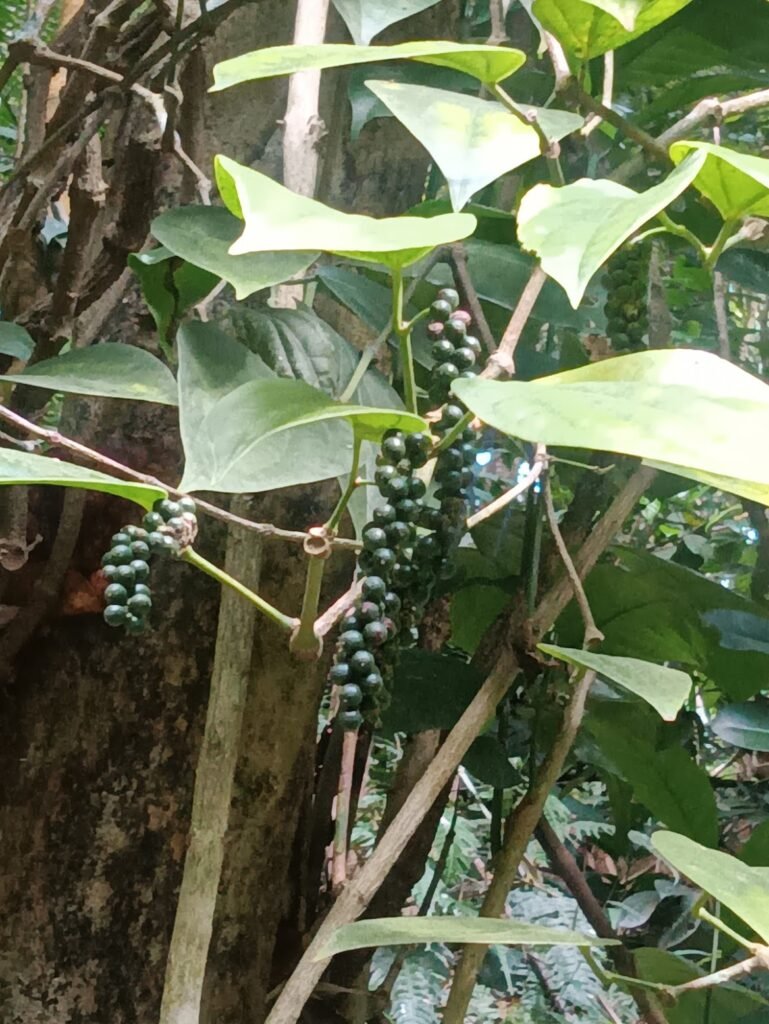
A climbing plant
Traditional pepper cultivation has been negatively affected by industrialization. Monocultures and artificial fertilizers damaged the growing areas. Today, more farmers are re-cultivating old pepper varieties to contribute to preserving biodiversity.
Pepper is a climbing plant that also climbs trees wild.
In cultivation, it is usually grown in combination with other plants.
The green plant has round leaves that taper to a point. In nature, pepper plants grow up other trees and plants up to ten meters tall.
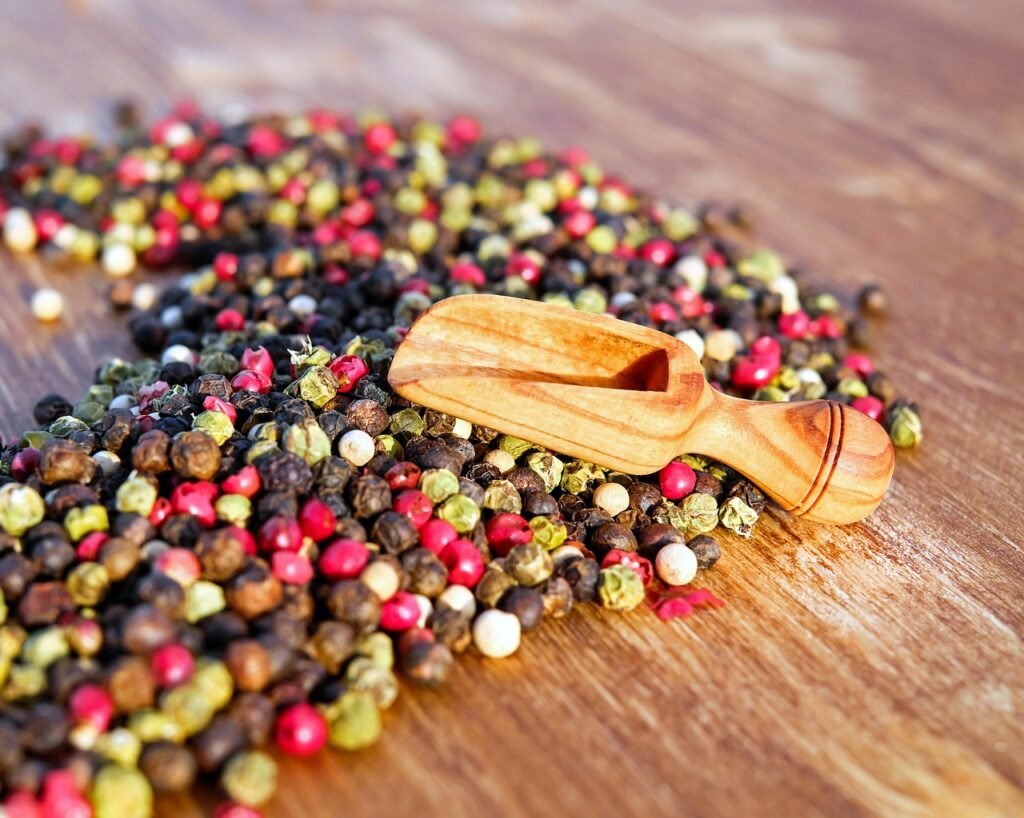
All pepper berries come from one bush, whether black, red, green, or white.
Classic black, white, green, and red Pepper grow on the Piper Nigrum pepper bush. From a botanical point of view, only the fruits of the evergreen Piper Nigrum pepper bush are true peppercorns.
The degree of ripeness and the processing method determine their aroma and the different colors.
The peppercorn gets its spiciness from the plant substance piperine. Pepper harvested unripe contains less of the plant substance and tastes milder. With a longer ripening period, the piperine and sugar content of the berries increases. Red peppercorns are not only hotter but also sweeter.
Green Pepper: The unripe green peppercorns are soaked in brine to preserve them; it retains the green color of the peppercorns, and their hard consistency becomes soft. It has a mild spiciness and a fresh, fruity taste.
White Pepper: When they are fully ripe, the peppercorns become red. Soaking them in water for a long time removes their pulp. The seeds dry in the sun and bleach to form white peppercorns. Because the fruit skin is lost, white peppercorns only have a mild aromatic taste. White Pepper is known as the hottest Pepper there is.
Black Pepper: Harvested shortly before they are ripe, the green berries are dried in the sun to form the black and shriveled peppercorns we know. Black Pepper also has a mild spiciness and fruity aroma.
Red Pepper: The red or pink peppercorn is the fully ripe fruit of the pepper plant. After harvesting, they are placed in brine to preserve them, as they decay quickly. Pure red Pepper is a rarity. Due to the long ripening process, the fruits have more fructose and piperine and are the hottest and sweetest peppercorns.
Is Pepper healthy?
The ancient Indians have used the healing power of black Pepper for thousands of years. In Ayurveda, it is considered a medicine for coughs and sore throats. It regulates digestion and can help with heart problems and intestinal diseases. Spicy Indian food also has a function. Piperine and caryophyllene have an antibacterial effect on the throat and kill germs and bacteria.
Das Piperin sorgt nicht nur für seine Schärfe, sondern wirkt auf den menschlichen Organismus entzündungshemmend, fiebersenkend und immunstärkend.
Pepper stimulates salivation and digestion when eaten and can help lose weight if used carefully.
Piperine supports the effect of other ingredients, such as turmeric. The spice only develops its health-promoting properties in combination with Pepper.
Pepper makes you happy because the body produces endorphins to counteract the heat and spiciness.
How do you use Pepper correctly in the kitchen?
As we know, Pepper comes in varieties with a wide range of flavors. The appropriate use in the kitchen is recommended depending on the nature of the essential oils. Some peppercorns only develop their flavor after long cooking times. You should only add other varieties later after cooking or use them as table peppers.
If you buy Pepper, product information is usually provided on the type of Pepper to ensure correct use. When ground, it loses its full flavor when cooked at high temperatures, and only its spiciness remains.
Freshly ground is well seasoned.
Pepper develops its aroma best when freshly ground and ground in a mortar. Depending on your preference, you can ground it coarsely or finely. The food will have a stronger pepper flavor if you grind it more. If grounded, its aroma evaporates and is quickly lost.
Therefore, a high-quality pepper mill is worthwhile.
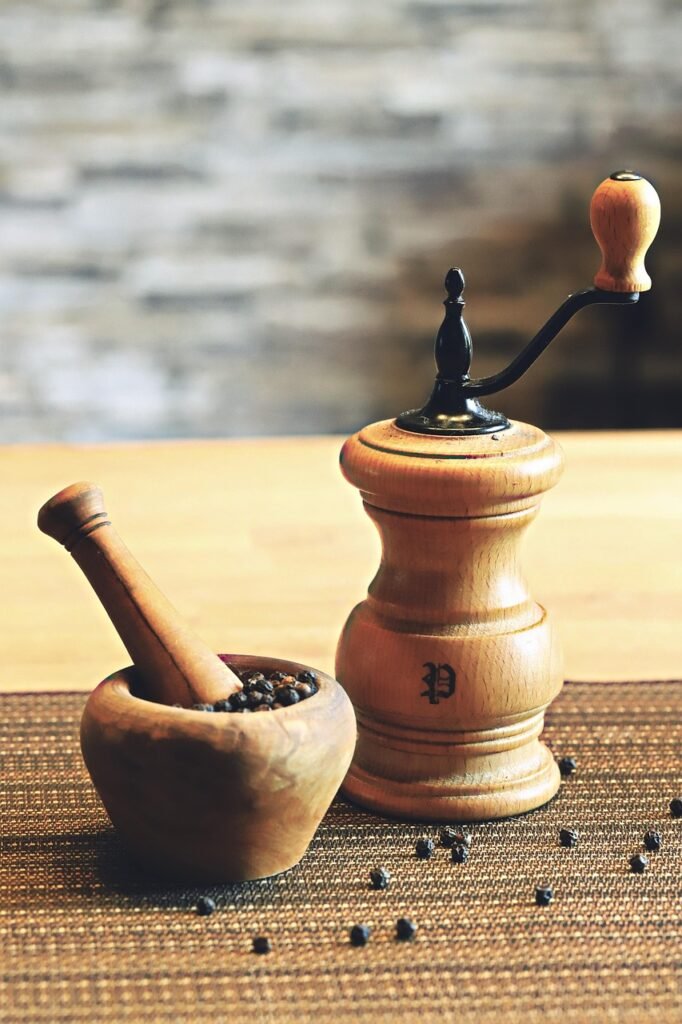
Image by Christina Horn from Pixabay
Blanch the berries briefly in hot water for a peppery aroma without the spiciness. Then, grind them and process them as usual. Briefly roasting them without fat reduces the spiciness of the berries. Roasting them in oil or fat intensifies the aroma of Pepper.
Too much Pepper in the food?
Too much Pepper in food can be unpleasant. You can reduce spiciness with dairy products; vegans can use coconut milk.
For soups and sauces, you can dilute them with water or vegetable stock. In salads, white wine vinegar takes the spiciness out of the food. An apple in the salad or a potato in the soup reduces too strong pepperiness.
Recipes with Peppercorns
Easy Vegan Peppercorn Sauce
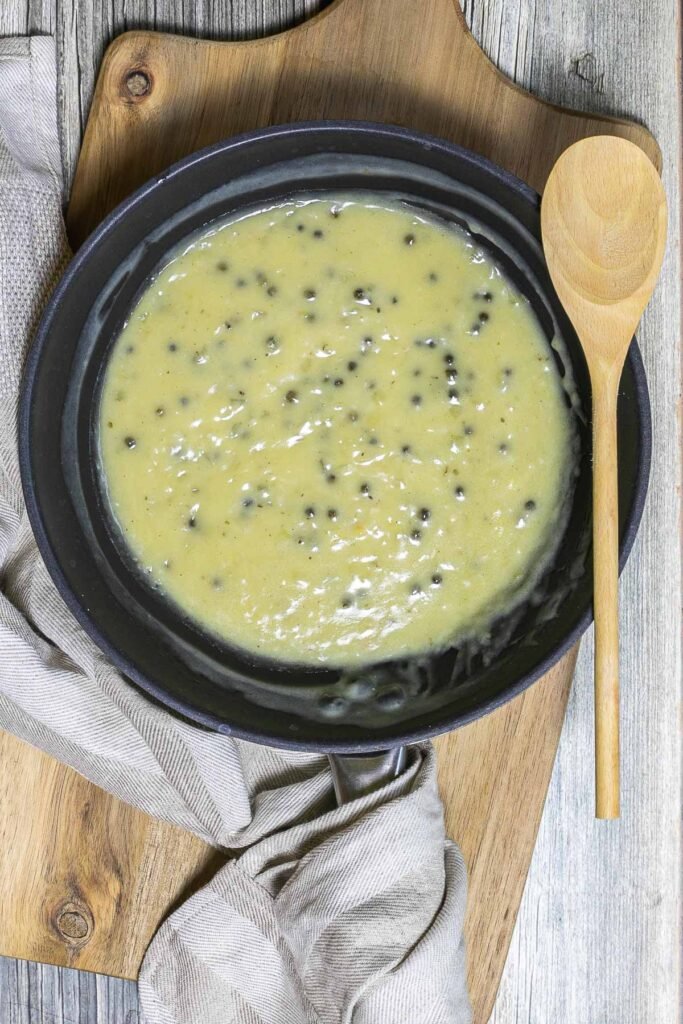
Made with fresh green peppercorns and a handful of other ingredients, it is a deliciously versatile addition to your vegan kitchen.
Green peppercorn and lemongrass coconut broth
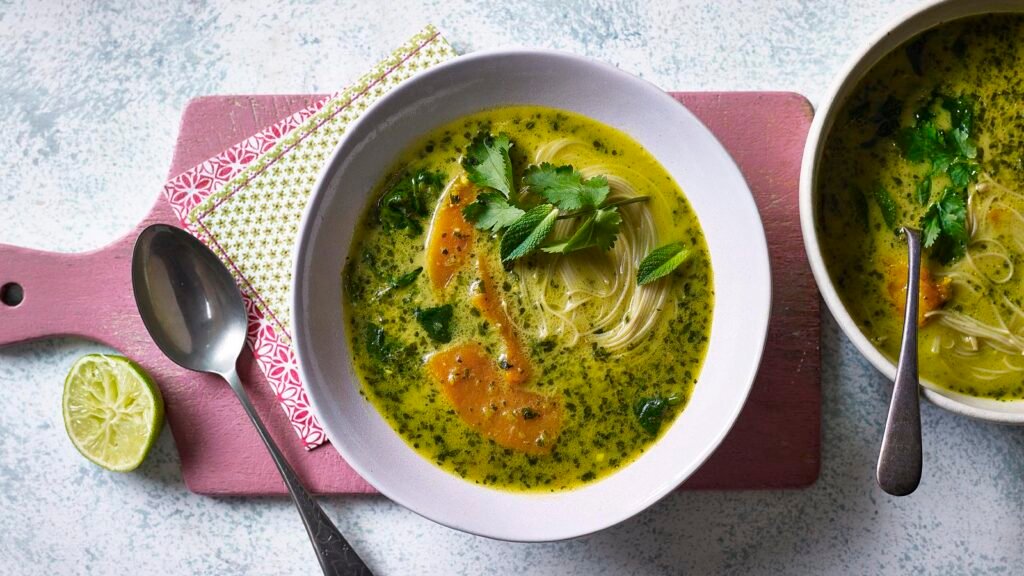
A coconut and vegetable vegan soup that is easy to make with wonderfully fragrant flavours.
Baba Ganoush with Pink Peppercorns
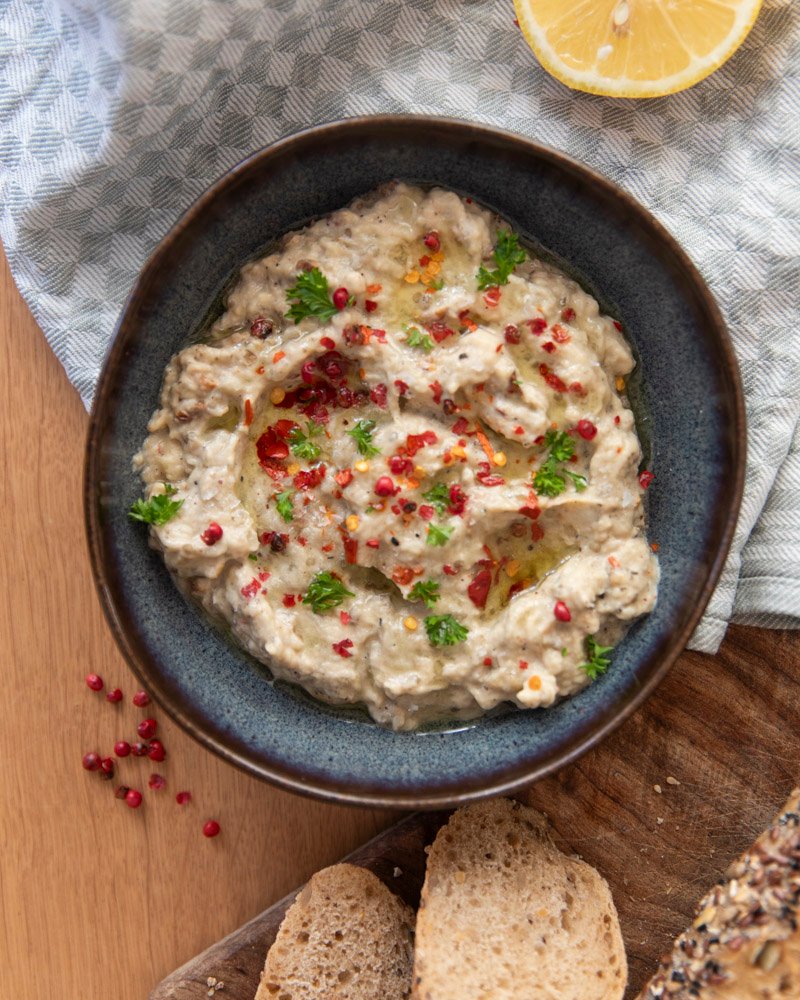
Smokey, creamy, zingy, and packed full of spices and flavour. This is one little dish that would work with any meal.
Asparagus & Pink Peppercorn Soup
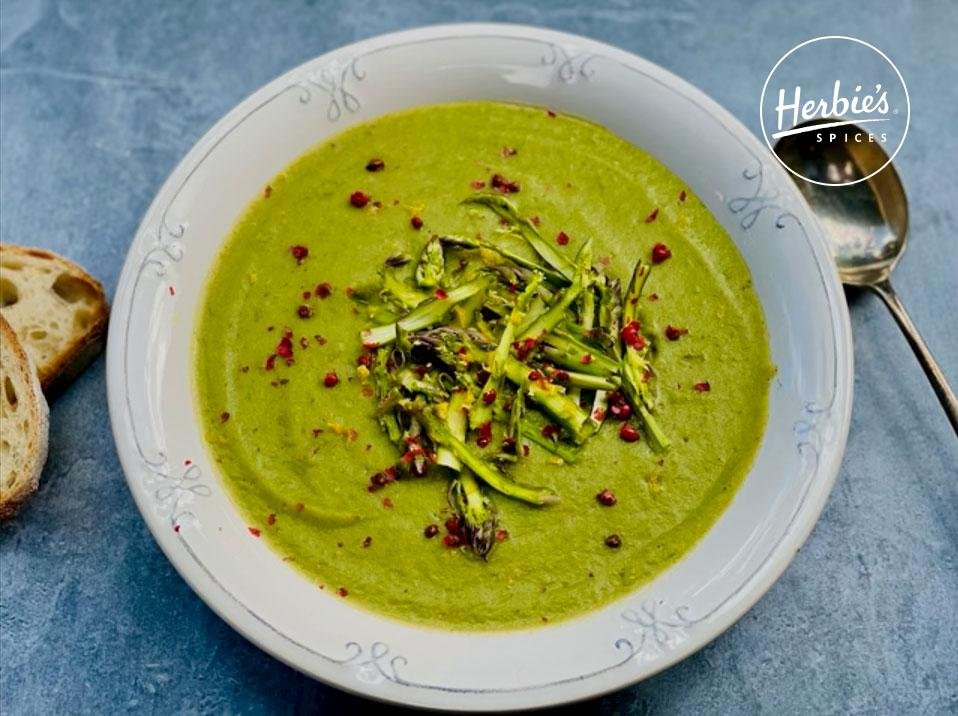
Nothing says spring like a lovely green soup, and with asparagus and pine-like pink peppercorns, you can’t go wrong.
Pink Peppercorn Hot Chocolate
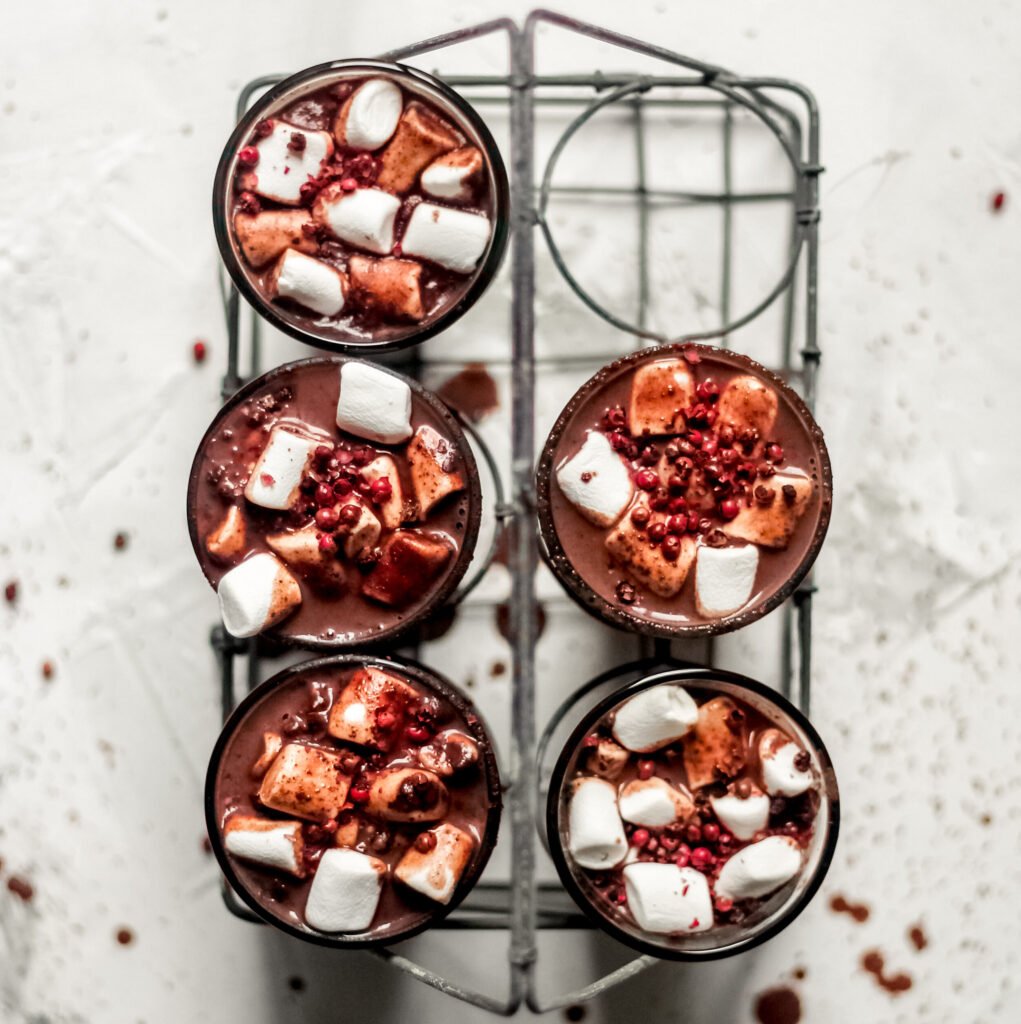
This paleo, vegan, and dairy-free hot cocoa gets a good-for-you boost with it’sit’s nutritious ingredients. It’s super rich, luxurious, and has a creamy mouthfeel thanks to coconut milk, dark chocolate, and Dutch-processed cocoa.
Fermented cauliflower with pink peppercorn and chilli 🌳🌶
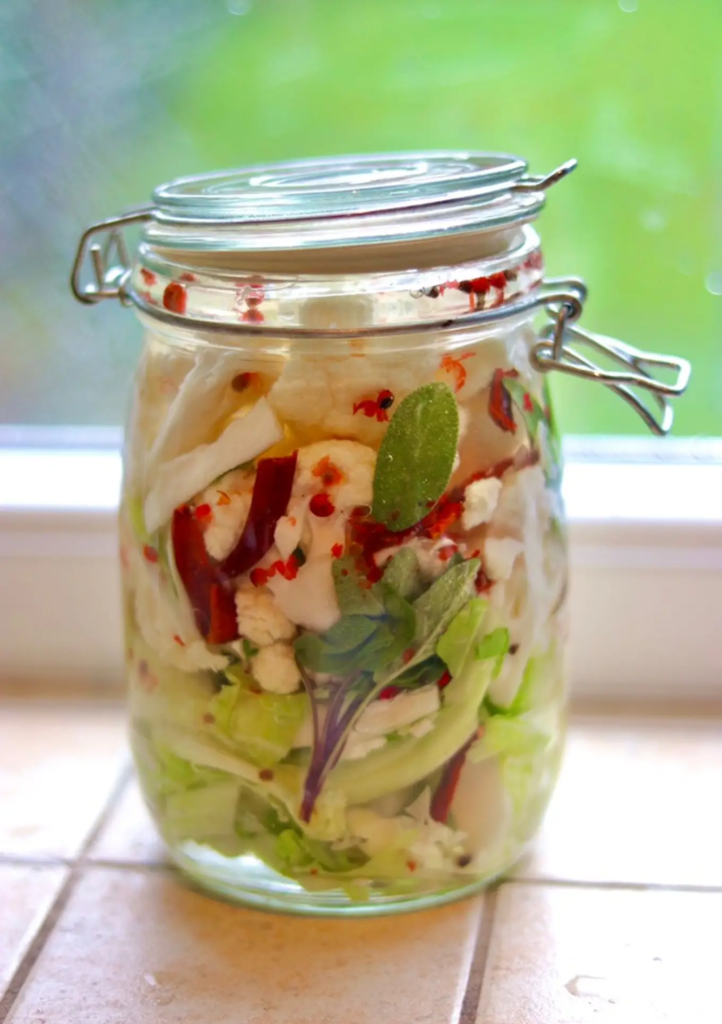
Vegan Black Pepper Tofu
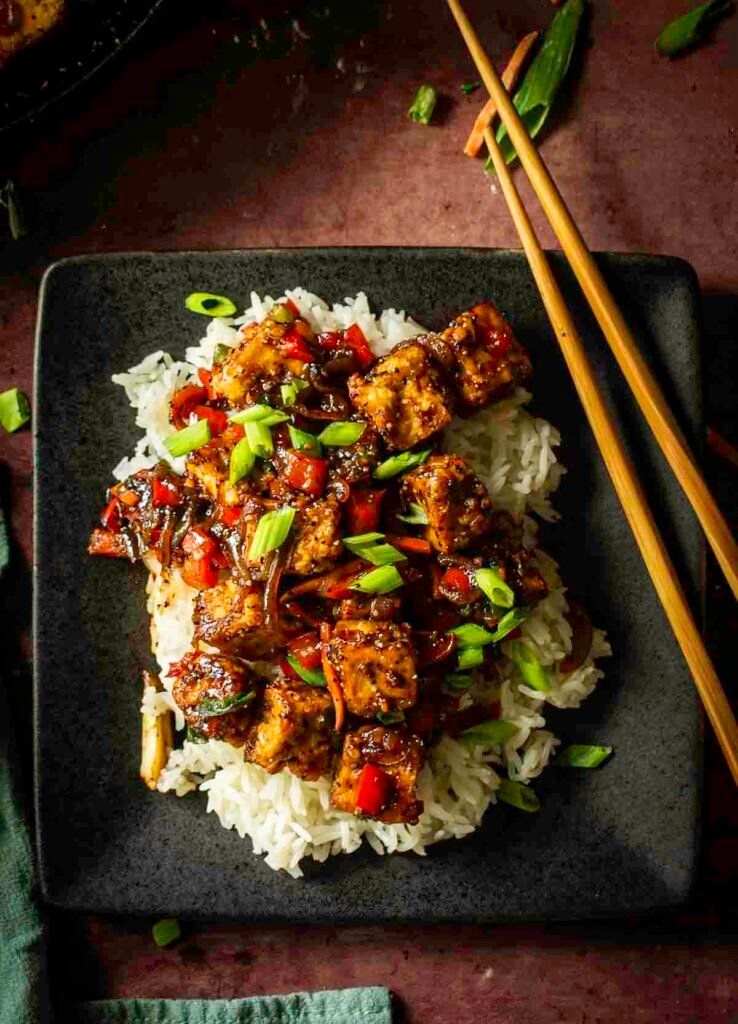
This vegan Black Pepper Tofu recipe is a delicious tofu stir fry with crunchy red bell peppers and red onion smothered in a sweet, peppery sauce.
Vegan Singapore Black Pepper Sauce Spaghetti
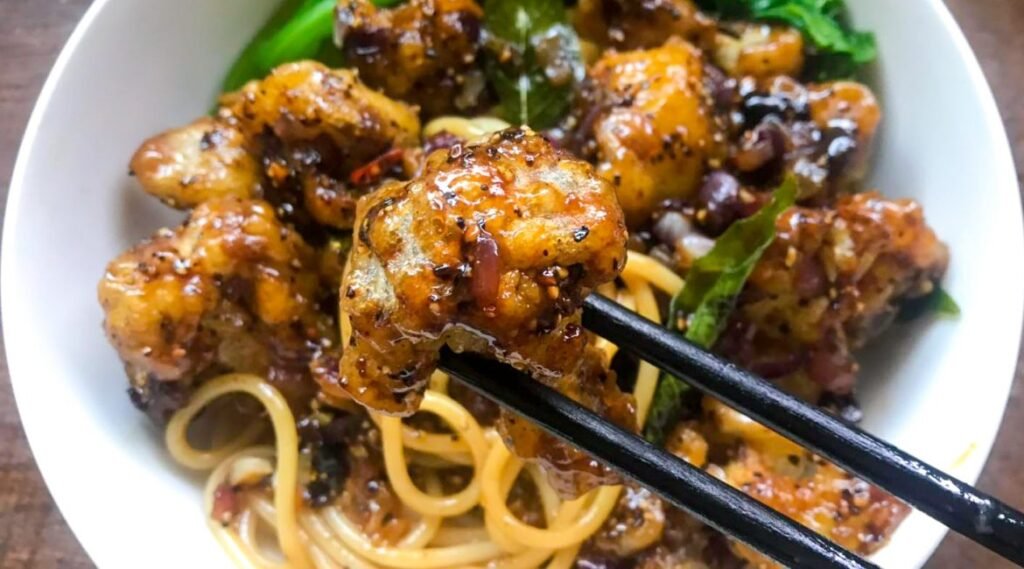
One of Singapore’s major exports is food. Singapore black pepper sauce is different from all the other black pepper sauces because of the addition of fermented yellow bean paste (taucheo) and curry leaves. This gives the sauce an extra layer that is unique to the region.
Gluten-Free Vegan Cholent
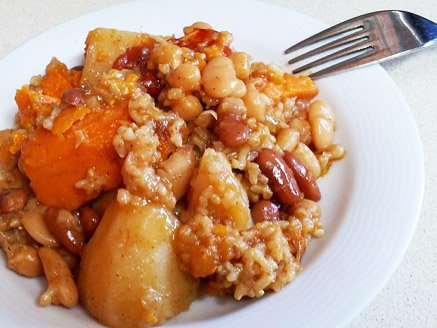
Gluten-free and vegan cholent that is very suitable for cold winter days with lots of vegetables and legumes. Instead of seasoning with black Pepper – try the white Pepper!
Vegan Hot and Sour Soup
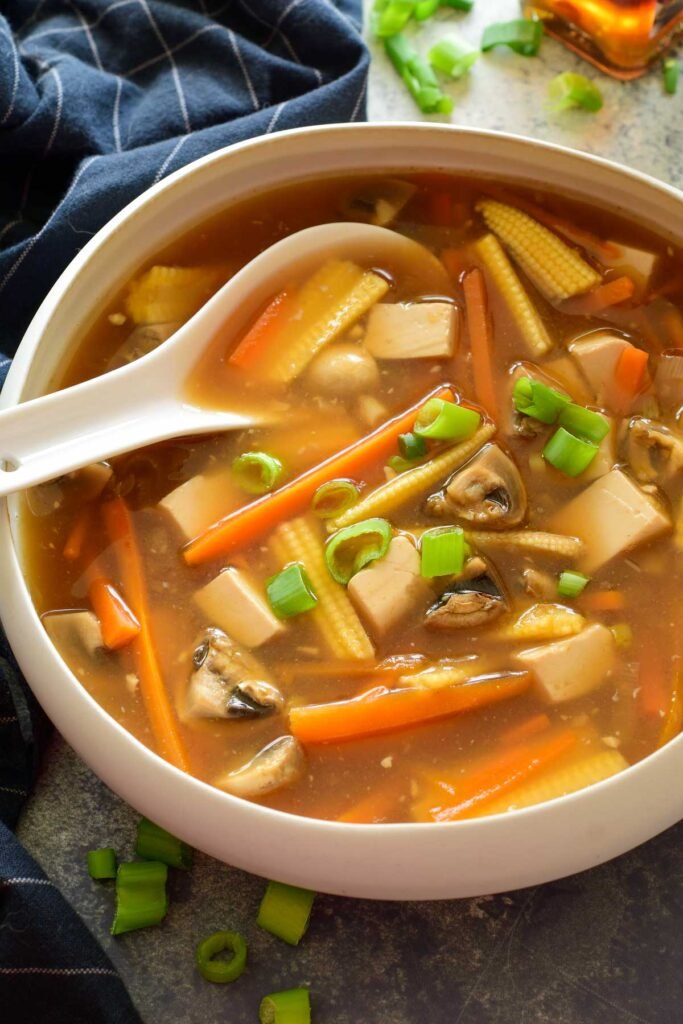
This vegan hot and sour soup recipe has the classic flavors of Chinese takeout but simplified with easy-to-find ingredients.
See also > Nutmeg: A Versatile Spice with Health Benefits
And > Why You Need Cloves To Spice Up Your Healthy Kitchen




